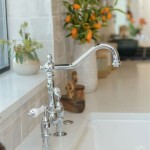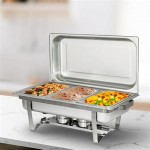Farm Fence Designs: Essential Aspects to Consider
A well-designed fence is a crucial element for any farm, providing safety and security for livestock, protecting crops, and defining boundaries. When planning a farm fence, several essential aspects must be taken into account to ensure its effectiveness and longevity.
Material Selection
The choice of fencing material depends on various factors, including the type of livestock, desired level of security, durability, and cost. Common materials used for farm fences include:
- Barbed wire: Cost-effective and widely used for livestock containment.
- Woven wire: Provides added security and durability for smaller animals.
- Electric fence: Can be effective for deterring livestock but requires regular maintenance.
- Wood: Traditional and aesthetically pleasing, but requires regular upkeep.
Height and Strength
The height and strength of the fence should be determined based on the size and behavior of the livestock being contained. Taller fences are necessary for animals that can jump or climb, while stronger fences are required for animals that are prone to pushing or breaking through.
Design and Layout
The design and layout of the fence should consider the farm's topography, available space, and access points. Factors to consider include:
- Corner posts: Should be strong and securely embedded to support the fence line.
- Line posts: Determine the spacing and height of the fence panels.
- Gates: Provide access for vehicles and personnel, and should be designed to prevent animals from escaping.
- Bracing: Additional support may be required for fences in areas with strong winds or high animal pressure.
Electrical System
Electric fences require a well-designed electrical system to ensure effectiveness. This includes:
- Power source: Can be a solar-powered charger, battery, or grid connection.
- Conductive wire: Typically made of stainless steel or aluminum, and should be securely attached to the fence posts.
- Grounding system: Essential for completing the electrical circuit and delivering a shock to animals that touch the fence.
Maintenance and Inspection
Regular maintenance and inspection are crucial for ensuring the longevity and effectiveness of the fence. This includes:
- Tightening: Loose wire or sagging fence lines should be tightened to maintain tension.
- Repairing damage: Broken or damaged panels, posts, or gates should be repaired promptly.
- Electrical testing: Electric fences should be tested regularly to ensure proper voltage and grounding.
By considering these essential aspects in farm fence designs, farmers can create secure and effective barriers that protect their livestock, crops, and property.

Photo Gallery Fenceworks Farm Fence Backyard Fences Garden

Farm Ranch Fencing Seegars Fence Company

Farm Style Fence Wood Wire Fenceworks Nw

Wood Farm Fence Designs And Styles Resource

Farm Horse Fencing From Bonney Lake Enumclaw Company Fence Pasture

4 Best Rural Fencing Ideas Give Your Farm An Aesthetic Uplift

Cattle Fencing Common Fence Designs Waratah

Explore Our Popular Ranch Style Fences What Are Farm

Ranch Rail Option21 Jpg 490 325 Pixels Wood Fence Design Backyard Fences Farm

Wood Farm Fence Designs And Styles Resource








